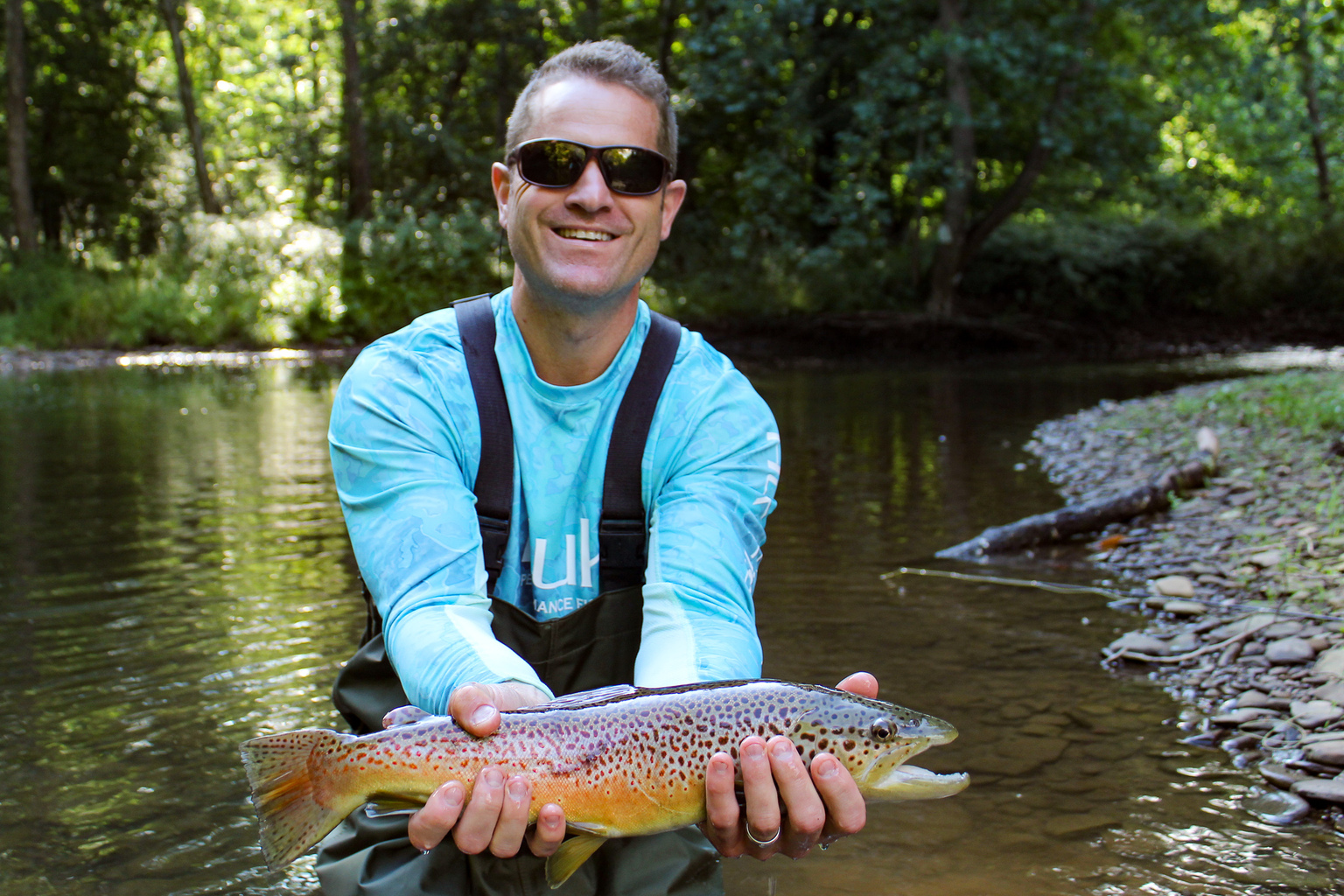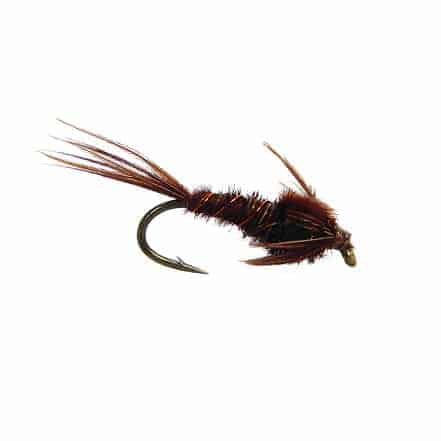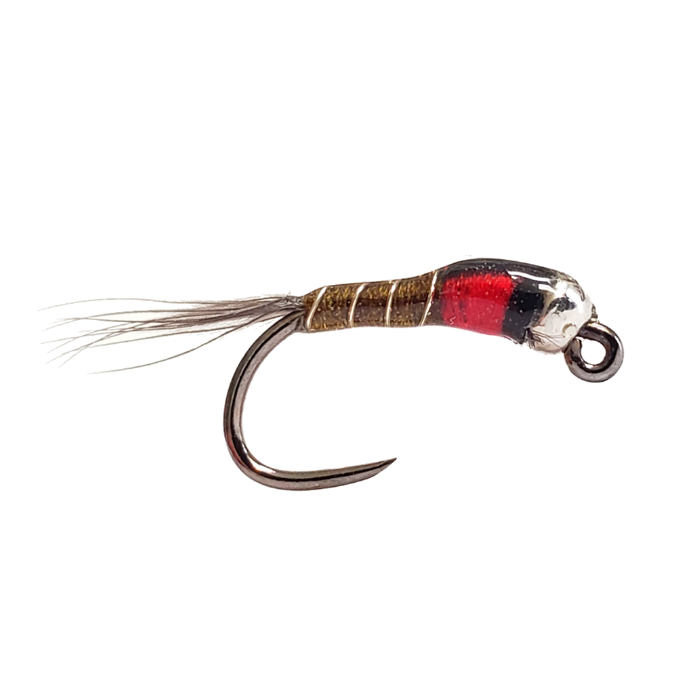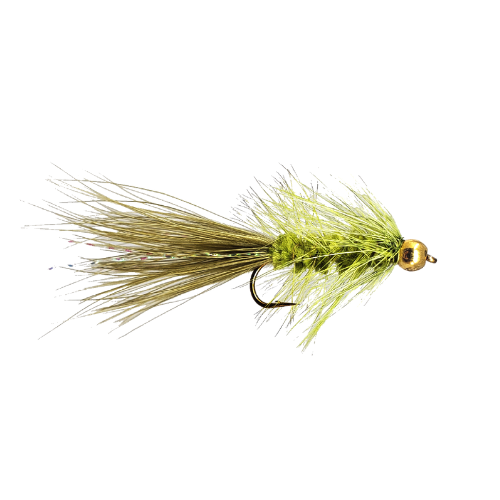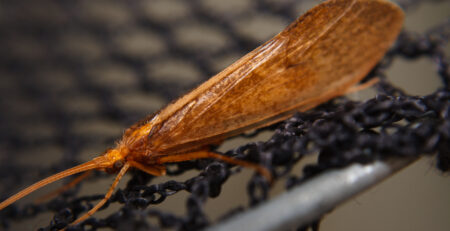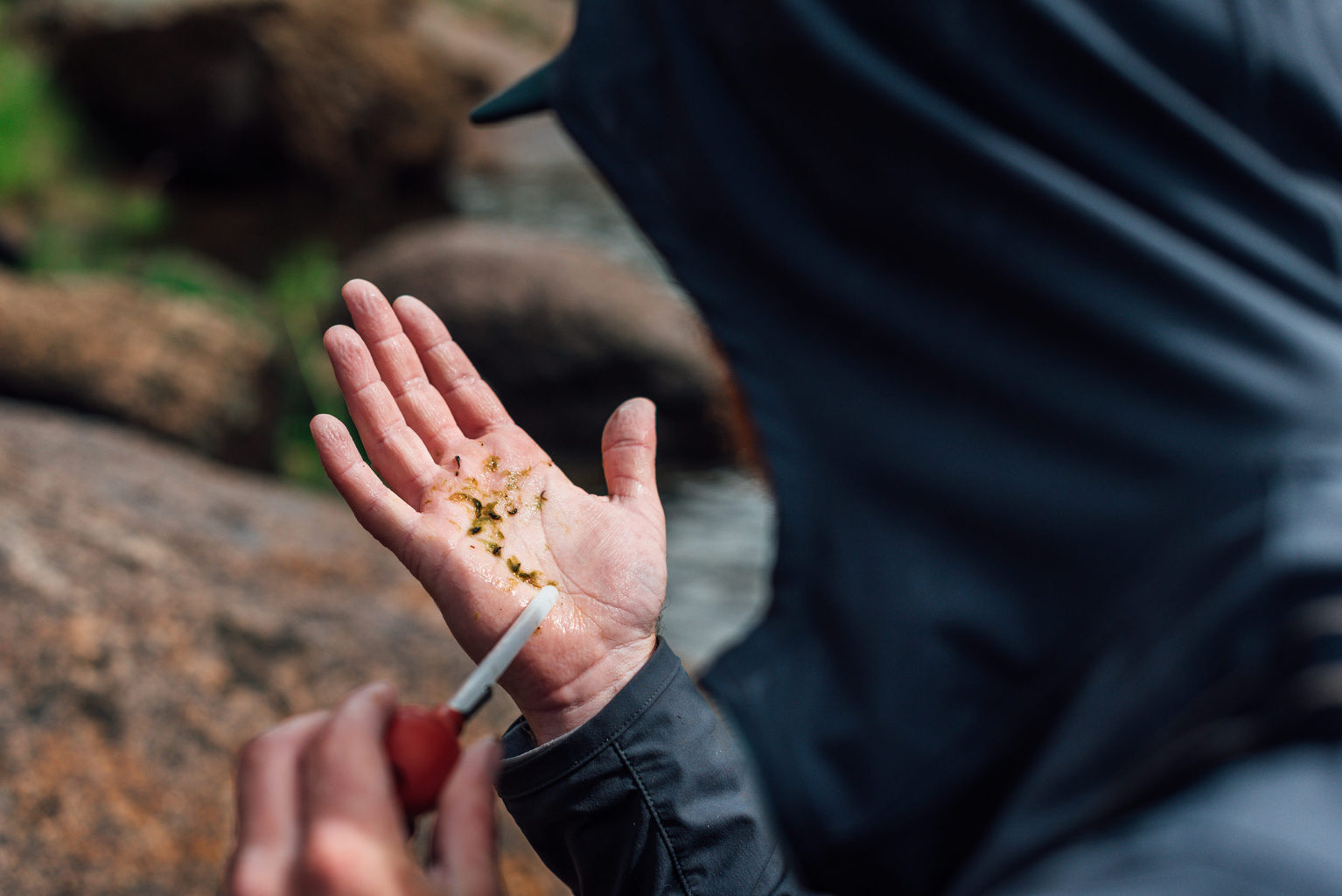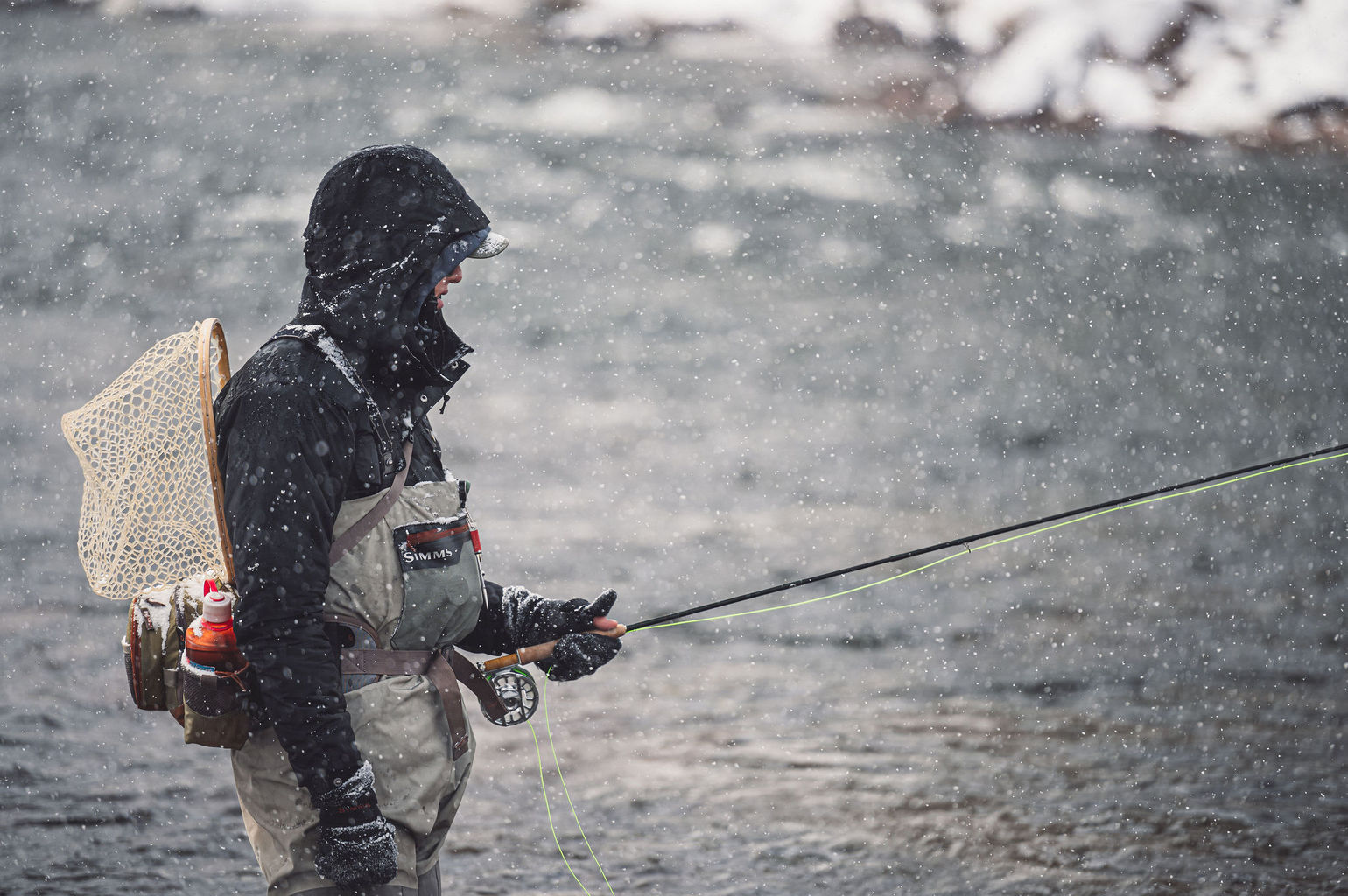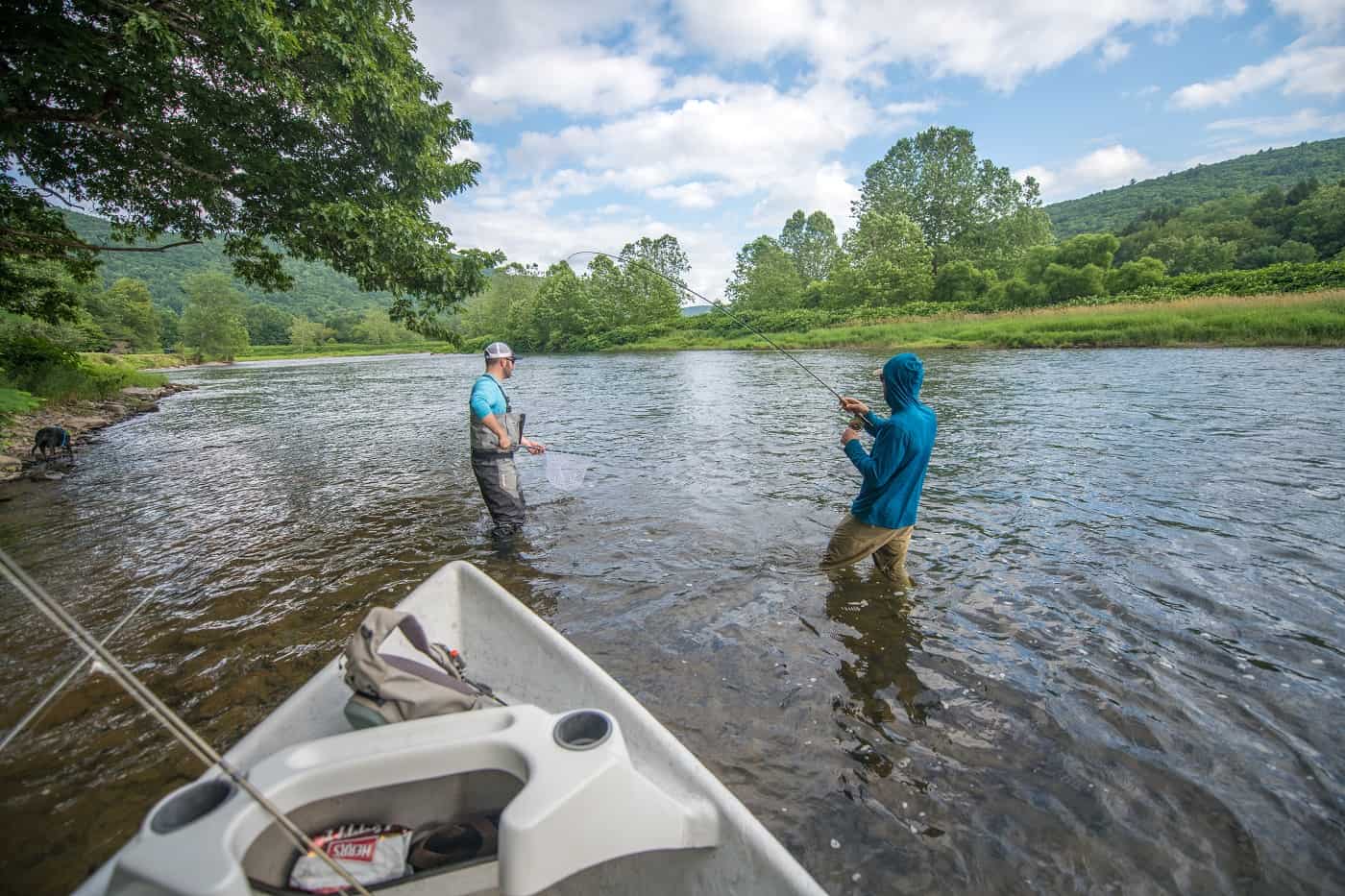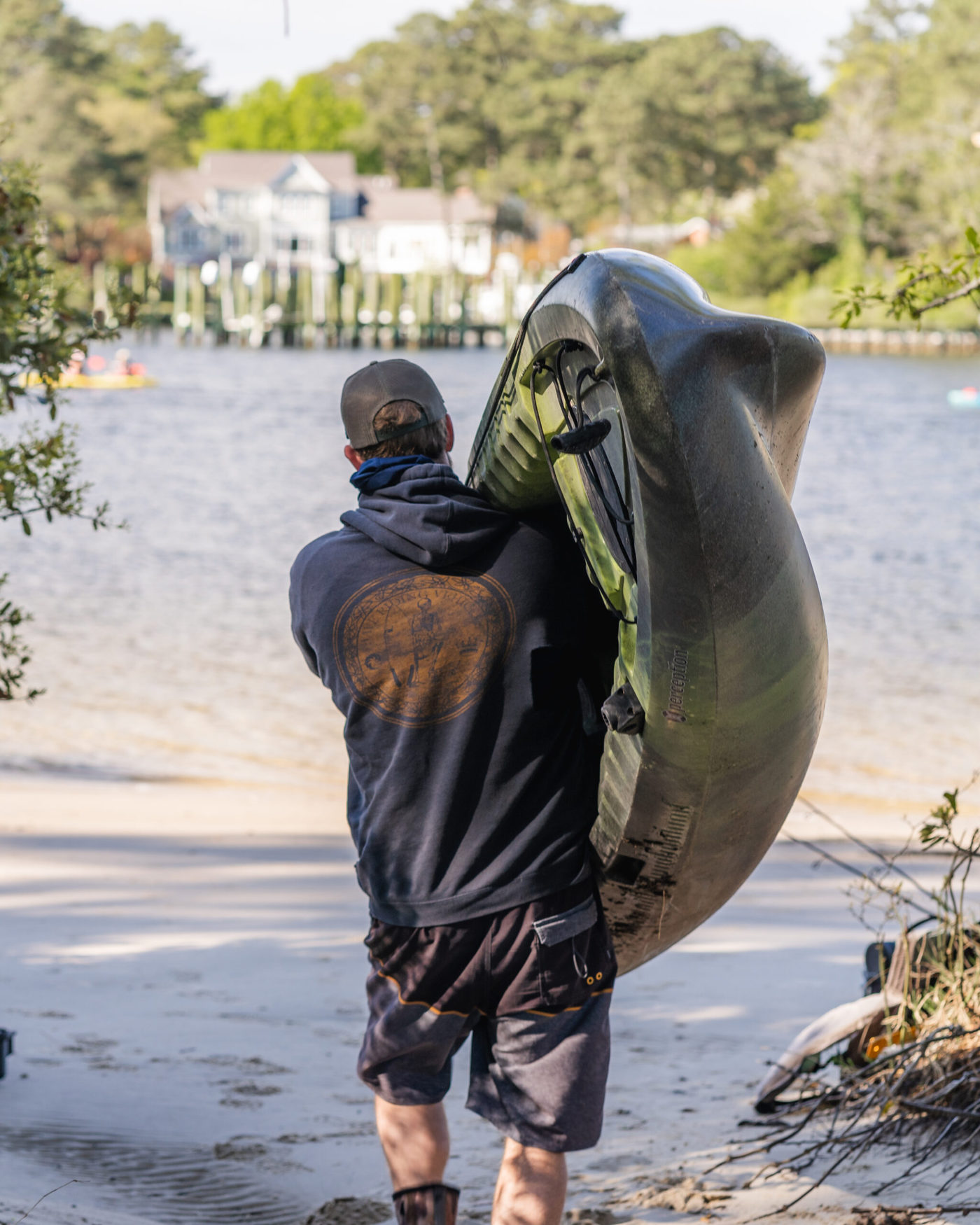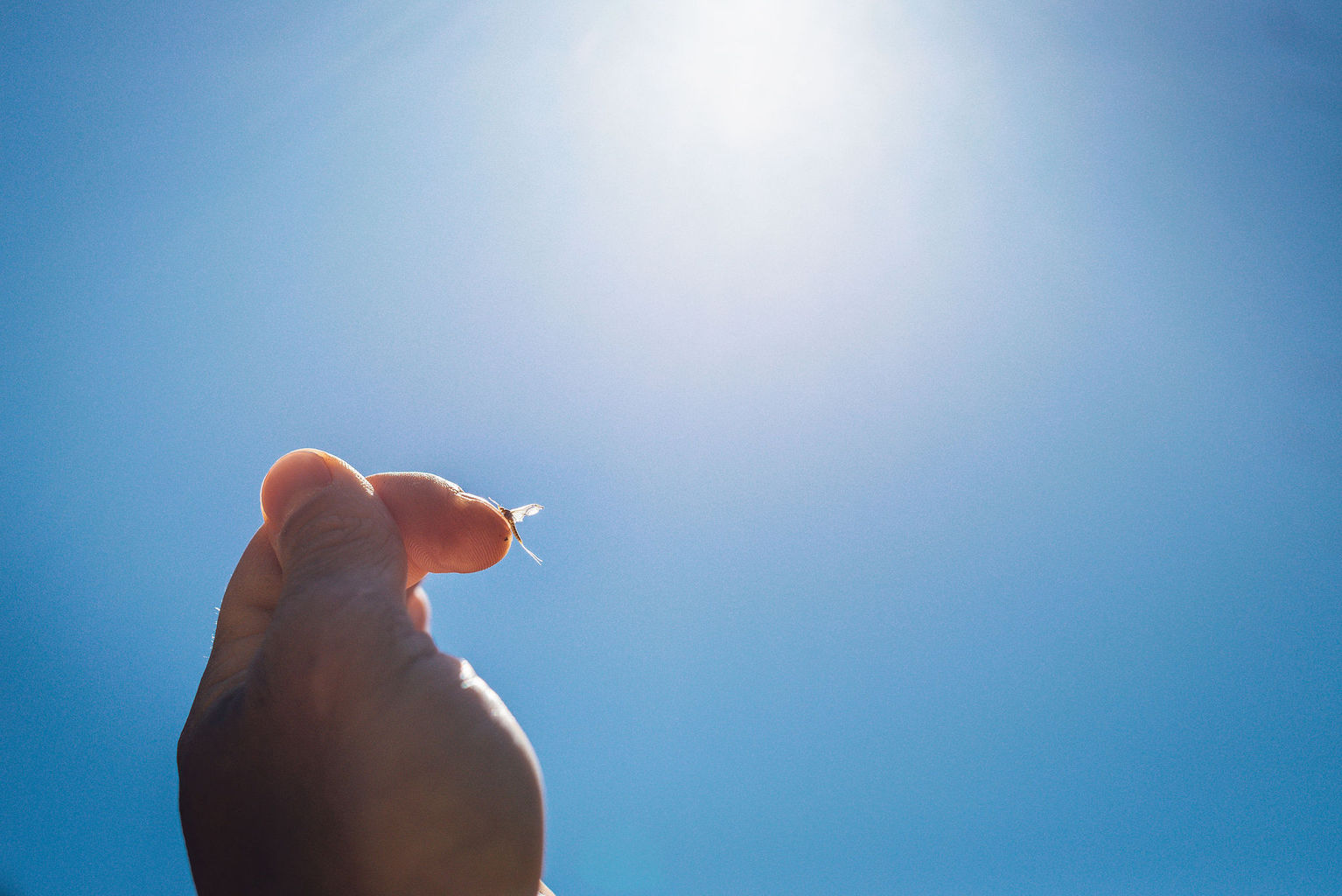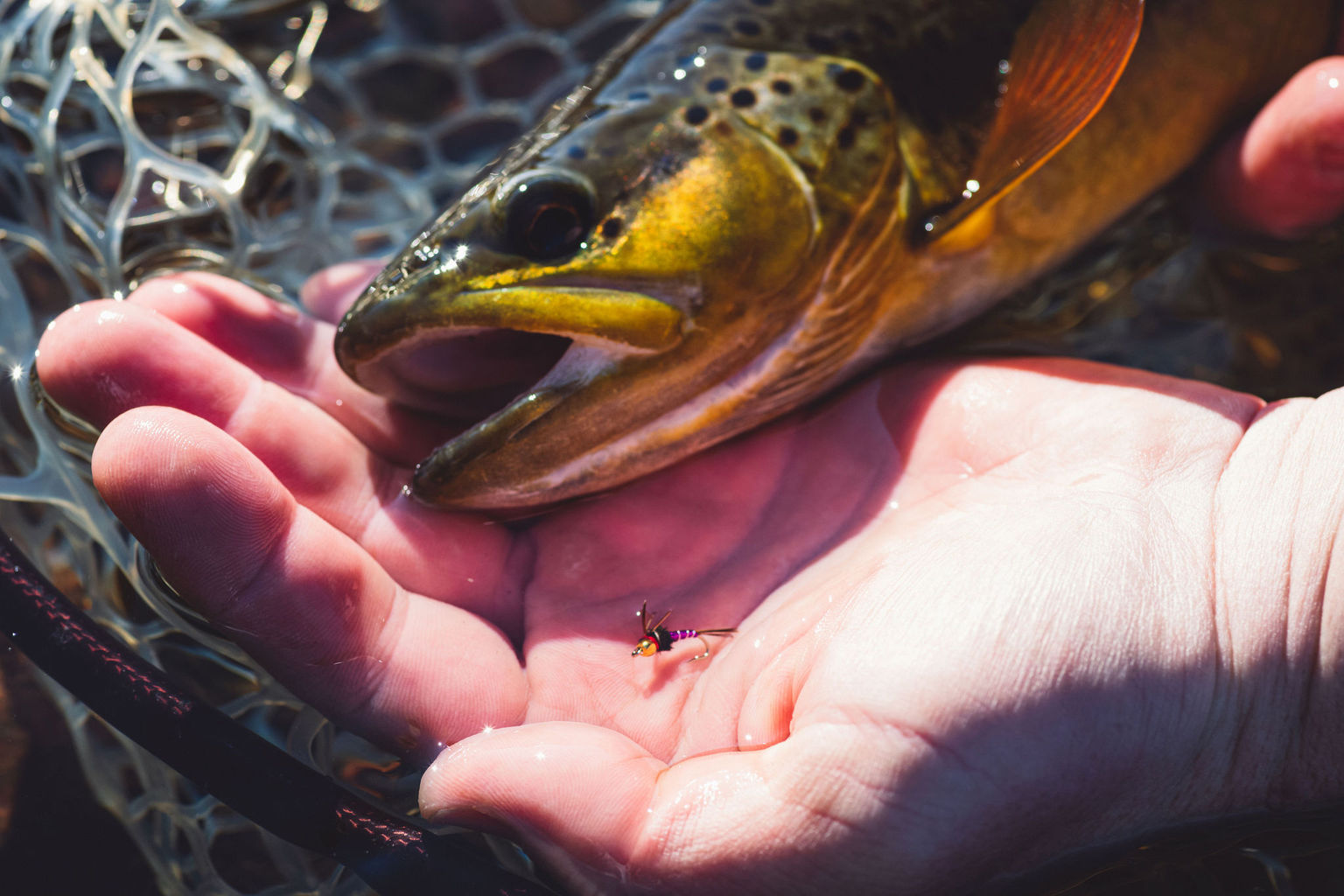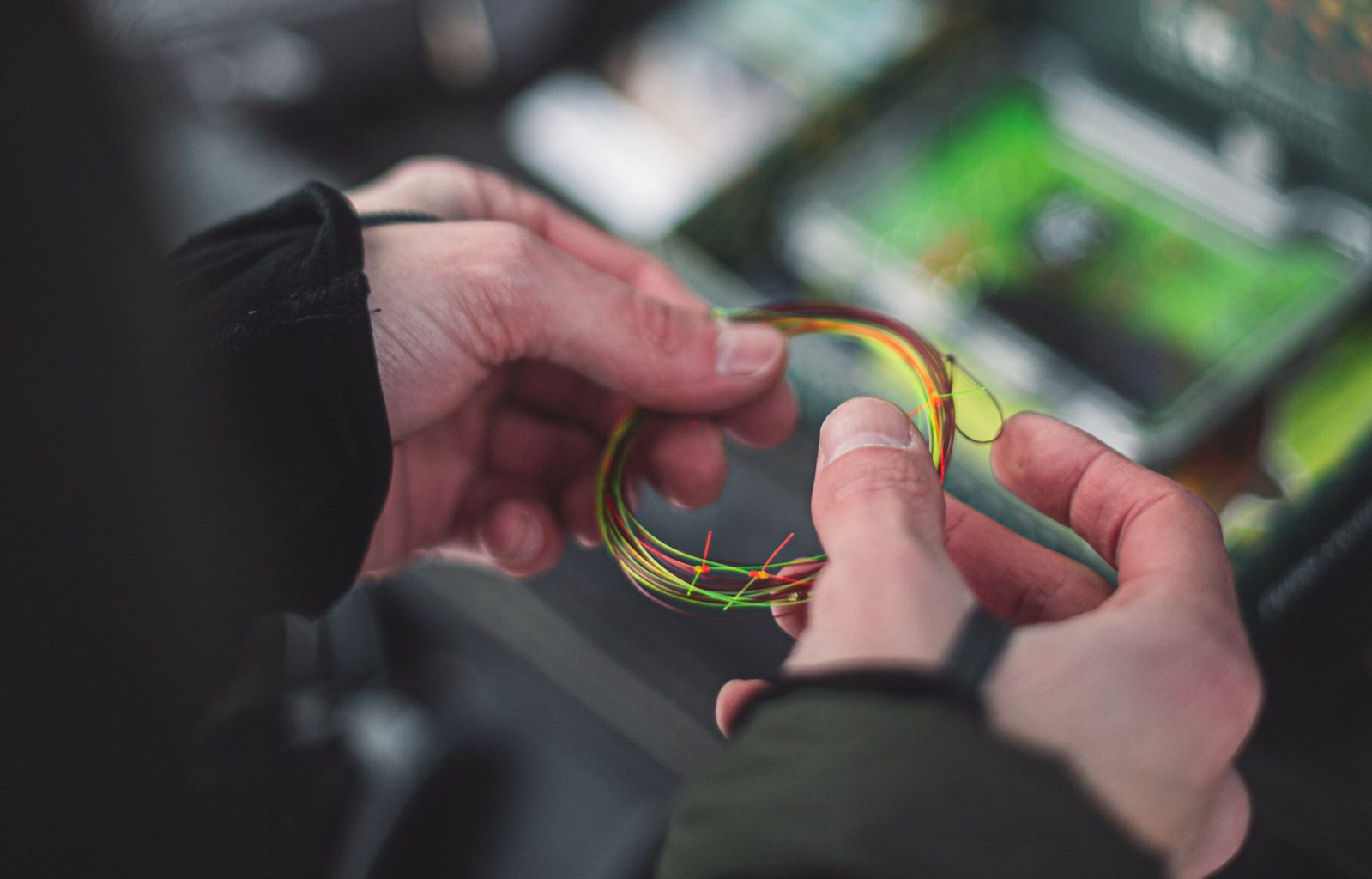10 Great Multiple Fly Rig Setup Combinations For Trout With Flies You Already Have
There isn’t much that gets an angler’s heart pumping quite like a big trout hammering terrestrials right on the bank, which makes August a month to look forward to each year.
In most parts of the country, August is a relatively dead month in terms of heavy bug hatches. Tricos are perhaps the most consistent insect to follow, and along with a few caddis and the odd yellow sally, that rounds out the summer bug lineup for the most part. While you can always nymph up some fish using general attractors, it’s the terrestrial action that really gets people fired up!
Hopper & Pheasant Tail
This rig is built for western rivers where stoneflies are prevalent and trout spend a lot of their time near the banks. A Hopper dry fly is big enough to stay afloat with a nymph trailing behind and it’s a great way to fish pockets that dot fast-moving freestone streams. Drifts in these situations will be short, but often sweet as the trout don’t take too long to engulf the hopper or stonefly quickly after it hits the water!
Hi-Viz Ant & WD-40
Ants are sometimes overlooked as far as terrestrials go, but they shouldn’t be! They are some of the most common bugs crawling around near streams and they often fall into the water, providing easy snacks for waiting trout. In some parts of the West, large flying ants emerge in August and give anglers the chance to still fish large dries as opportunistic fish lie in wait. The WD-40 is a nice nymph to drop behind the ant, since a black version can imitate tricos or midges that might also be hatching in that particular waterway.
Hi-Vis Beetle & Green Weenie
Beetles make up a large portion of the terrestrial world, and as such they’re a perfect fly to use this summer! The only issue with them can be the visibility in the water, which is alleviated by using the hi-vis version. Inchworms are also a great option for the summer months, and the Green Weenie is one fly in particular that kills it when trailed behind a beetle! One of the great benefits of this pattern is that it can be fished at or near the surface, since inchworms are relatively weightless and can bounce around throughout the top of the water column almost in the film.
Green Weenies are also a caddis larva imitation, which many are a bright green color. This is how most fly anglers know of the Green Weenie, as a nymph pattern as opposed to an inchworm fly.
Copper John & Zebra Midge
A great prospecting nymph combined with one of the best midge larvae imitations ever created. Tie the Zebra Midge above the Copper John so that Copper John’s hefty body drops the Zebra Midge in feeding lanes. We love this combo because it’s two of the most readily available food sources for trout i.e. mayfly nymphs and midge larvae.
Perdigon & Jiggy Frenchie
Probably the most common tight-line nymphing combination in anglers’ boxes. Depending on the bead size and hook size, the Perdigon or Jiggy Frenchie will take the lead fly role. Most fly anglers place the heaviest bead and or largest fly at the base of their nymphing rigs.
Zebra Midge & Woolly Bugger
Hold on. A streamer combined with a tiny midge fly? Yes, this works in streams and rivers — not just in stillwater. Of course, you can position one above the other to suit your personal tastes, but for easier casting and presentations you’ll want to place the Woolly Bugger at the end of your rig. From there you can make slow retrieves or dead drift in your favorite water.
Adams Parachute & Elk Hair Caddis
Having two dry flies targeting the day’s caddis hatches and mayfly hatches is a great way to dial into what trout are keying in on. If you have never fished two dry flies at the same time, there are many benefits.
- One, both dry flies will work together to keep the other afloat.
- Two, with low visibility it will be easier to spot both as opposed to just one — especially when fishing smaller sizes the parachute will stick out.
- Three, you can fish two hatches at once.
Overall, our staffers love this method and it does well throughout the fishing season.
Trico Spinner & Adams Parachute
Another fantastic double dry fly rig that has one goal in mind, visibility. It’s always a challenge to spot your imitation Trico amongst the naturals, but with a bright Adams Parachute marking the general location you can have a better idea of when to set the hook. Plus, you can use a size #18 to size #22 Adams Parachute as another Trico pattern and, effectively, double up on the hatch.
JuJuBee Midge & BWO Parachute
One of our go-to rigs for picky trout in low water that are visibly feeding just below the surface. Having the JuJuBee Midge 6 to 10-inches below the BWO Parachute will allow you to imitate the emerging nymphs that trout are feeding on just a few inches below the surface.
You may also not be sure what trout are rising to — dry flies or nymphs? This rig presents both as attractive options and, often times, you will hook up on both.
Chubby Chernobyl & RS2 & Rainbow Warrior
The summer season can provide some excellent action for big trout at a time of the year when there isn’t a ton of bug activity. Hoppers, ants, and beetles can bring large fish to the surface as they gorge on protein-rich insects that haphazardly fall into the water. Grassy banks and overhanging branches are prime spots to use these rigs, and whether anglers are wading or fishing from a raft there’s nothing better than watching a chunky brown or rainbow shoot through the water and hammer these patterns! Then, having a trailing rig of small nymph patterns will allow you to catch more fish when they refuse the hopper on the top.

